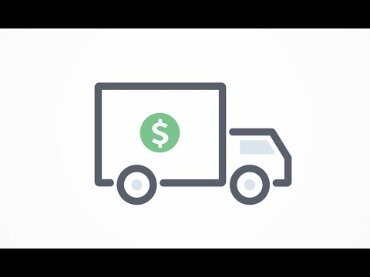Contents:


Sales Discounts, Sales Returns and Allowances, and Cost of Goods Sold will close with the temporary debit balance accounts to Income Summary. Updates and records the inventory account at certain, scheduled times at the end of an operating cycle. The update and recognition could occur at the end of the month, quarter, and year. There is a gap between the sale or purchase of inventory and when the inventory activity is recognized.
He is a professor of economics and has raised more than $4.5 billion in investment capital. Sakshi Udavant covers small business finance, entrepreneurship, and startup topics for The Balance. For over a decade, she has been a freelance journalist and marketing writer specializing in covering business, finance, technology. Her work has also been featured in publications and media outlets including Business Insider, Chicago Tribune, The Independent, and Digital Privacy News.
The second part is the date of record that determines who receives the dividends, and the third part is the date of payment, which is the date that payments are made. Printing Plus has $100 of dividends with a debit balance on the adjusted trial balance. The closing entry will credit Dividends and debit Retained Earnings.
Periodic Inventory System: Is It the Right Choice?
Instead of closing entries, you carry over your permanent account balances from period to period. For example, your year-end inventory balance carries over into the new year and becomes your beginning inventory balance. Temporary accounts are short-term accounts that start each accounting period with zero balance and close at the end to maintain a record of accounting activity during that period. They include the income statements, expense accounts, and income summary accounts. Basically, permanent accounts will maintain a cumulative balance that will carry over each period.
The permanent accounts are all of the balance sheet accounts (asset accounts, liability accounts, owner’s equity accounts) except for the owner’s drawing account. Entries from temporary accounts are moved into permanent accounts to close the temporary accounts. Say you close your temporary accounts at the end of each fiscal year. You forget to close the temporary account at the end of 2021, so the balance of $50,000 carries over into 2022. Either way, you must make sure your temporary accounts track funds over the same period of time. There is no set fiscal time for keeping a temporary account, and it can last for a year or even a quarter.
Instead, the company posts purchases of inventory to an expense account called Purchases. The Purchases account is usually grouped with the income statement expense accounts in the chart of accounts. At the end of an accounting period, entries from all revenue and expense accounts are transferred into the income summary account. This data reflects the net profit or loss that the business incurred during a particular accounting period or another specified time period. Since temporary accounts are short-term accounts, their data entries are moved to relevant permanent accounts to close them and maintain long-term financial records. These permanent accounts maintain a cumulative balance and offer a bigger picture of a company’s ongoing transactions.
Which is not a temporary account?
Luckily, you can avoid these roadblocks by incorporating simple inventory management procedures and tools into your operating plan. The example below has the same activities as above, except the company tracks each unit individually and what it purchased. Then, it performs a detailed physical inventory, reporting back each unit sold by the date the purchase was made. Record your total discount in your journal by combining the inventory sales and the sales discount entries. “Periodic systems are better with unknowns. Not all periodic systems have computer systems attached since computer logic does not do well with many unknowns,” explains Relph. However, the need for frequent physical counts of inventory can suspend business operations each time this is done.
End-to-end Financial Close Automation to enable day-zero close with close task and project templates, automated workflow and close task management. Enable 95% straight-through, same day cash application and 100% savings in lockbox data capture fees with HighRadius Cash Application Solutions.
Douglas Dynamics Reports Preliminary First Quarter 2023 Results and Updates 2023 Guidance – Yahoo Finance
Douglas Dynamics Reports Preliminary First Quarter 2023 Results and Updates 2023 Guidance.
Posted: Mon, 17 Apr 2023 21:00:00 GMT [source]
When running a business, it’s important to understand the value that each customer brings to your company. This value is commonly known as Lifetime Value or LTV, which is the amount of revenue a customer generates… Because you did not close your balance at the end of 2021, your sales at the end of 2022 would appear to be $120,000 instead of $70,000 for 2022. When shelving or stocking new inventory, you can use methods such as “last in, first out” or “first in, first out” . Generally, it’s smart to use the FIFO method, which stocks new goods behind older stock, so you sell older goods first.
The purpose of a clearing account
In sole proprietorships, they are closed to the owner’s capital account. In partnerships, they are distributed to the partners’ capital accounts using an appropriate allocation method. In corporations, they are closed to retained earnings or accumulated profits. Ultimately, after the closing process, temporary accounts are incorporated and become part of a “permanent” capital account.
However, stock shortages are just the first stumbling block caused by bad—or no—inventory management. It’s very easy to order excess inventory when you don’t closely track stock, which leaves you cash-strapped in the short term. Over time, inventory overages also lead to bottom-line losses due to expired, outdated and otherwise unsellable stock.

net terms of temporary accounts may include revenue accounts, expenses accounts, and income summaries. To avoid the above scenario, you must reset your temporary account balances at the beginning of the year to zero and transfer any remaining balances to a permanent account. A.Like accounts receivable, accounts payable is also an example of permanent accounts. The balance in the payables account gets carried forward to the next accounting period at the end of a period.
What’s the difference between managing inventory and asset tracking?
We do not offer financial advice, advisory or brokerage services, nor do we recommend or advise individuals or to buy or sell particular stocks or securities. Performance information may have changed since the time of publication. Promptly receiving inventory shipments is another key element of learning how to manage inventory. You can’t sell or ship inventory that’s not checked in and properly shelved or displayed.

We use the same table for this example as in the periodic FIFO example. Periodic system examples include accounting for beginning inventory and all purchases made during the period as credits. Companies do not record their unique sales during the period to debit but rather perform a physical count at the end and from this reconcile their accounts.
Clearing accounts are often called a wash account or cash clearing account. One of the reasons why use temporary accounts is to adjust the results of each accounting period to the reality of a company. If we had to understand quickly how the temporary account works, we would say that these are accounts that can be closed at the end of an accounting period. The advantages of the clearing account extend to almost all types of expenses and payments, starting with sales tax and ending with processing payroll. Businesses can use clearing accounts to document all sales, items, fees, and shipping details, taxes, or other expenses that have not yet been fully and properly accounted for. A clearing account becomes very helpful in managing accounts receivable too (let’s say, in the case of unpaid invoices).
Giving a Face to the Malware Proxy Service ‘Faceless’ – Krebs on … – Krebs on Security
Giving a Face to the Malware Proxy Service ‘Faceless’ – Krebs on ….
Posted: Tue, 18 Apr 2023 21:00:00 GMT [source]
For example, have an asset clearing account that is separate from a liability clearing account. Typically, companies with a high volume of funds coming in or going out use clearing accounts. For example, you may have high amounts of payroll, a high volume of invoices, or both. The purpose of a payroll clearing account is to enhance security. But, a separate payroll bank account also allows you to reconcile and analyze your books more efficiently. Both types of clearing accounts allow you to remind yourself of any goods or services you’ve rendered but not officially recorded.
Temporary vs. permanent accounts
Instead, your permanent accounts will track funds for multiple fiscal periods from year to year. Temporary accounts in accounting refer to accounts you close at the end of each period. A temporary account is an account that begins each fiscal year with a zero balance. At the end of the year, its ending balance is shifted to a different account, ready to be used again in the next fiscal year to accumulate a new set of transactions. Temporary accounts are used to compile transactions that impact the profit or loss of a business during a year. The balances in these accounts should increase over the course of a fiscal year; they rarely decrease.
- At the end of a fiscal year, the balances in temporary accounts are shifted to the retained earnings account, sometimes by way of the income summary account.
- Synder creates clearing accounts in your accounting system that reproduce the real money flows from any payment gateway.
- Because it is a permanent account, you never reset the balance of the inventory account at the end of the accounting period.
- These are the accounts reflecting the income earned from the enterprise activity.
Record the purchase discount by debiting the accounts payable account and crediting the purchase discount account. Businesses with periodic inventory in place may not realize a product is running low until a customer asks why it isn’t on the shelf. Even worse, you could make an online sale only to find the item isn’t in stock and backordered with your supplier. Both are far from ideal customer experiences and can add extra stress on your staff. One big negative, however, is that you are only collecting minimal information, usually just a discrete product count. Further, you do not collect or report this data in “real-time.” You update stock numbers at distinct periods and not when you buy or sell them.
Let’s say our product manager, Cristina, wants to know if she is pricing her company’s generic Bismuth subsalicylate high enough to leave a healthy profit margin. If she calculates the COGS as $10 per 100-mL bottle, she will need to price each bottle higher than $10 so her company can comfortably turn a profit. The basic difference between a return and an allowance is that we usually don’t return the goods if they are damaged or unsatisfactory in some way. The vendor issues a Credit Memo anyway and we remove the items from inventory and dispose of them. Buyers must record shipping charges as transportation in when the goods were shipped FOB shipping point and they have received title to the merchandise. Olga is a FinTech writer with a degree in communications and business experience in e-commerce.
For large businesses or growing businesses, operating with a periodic inventory system is akin to operating your business with blinders. To make good business decisions, most business owners and managers need updated information on a very regular basis. Most large businesses update inventory automatically with each sale or shipment. Whenever you make a purchase at a retail store or online, the retailer knows exactly what was sold and when so it can make decisions around restocking.
These permanent accounts show a company’s long-standing financials. Temporary accounts are closed at the end of every accounting period. The closing process aims to reset the balances of revenue, expense, and withdrawal accounts and prepare them for the next period. Unlike permanent accounts, temporary accounts are measured from period to period only. All temporary accounts must be reset to zero at the end of the accounting period. To do this, their balances are emptied into the income summary account.


